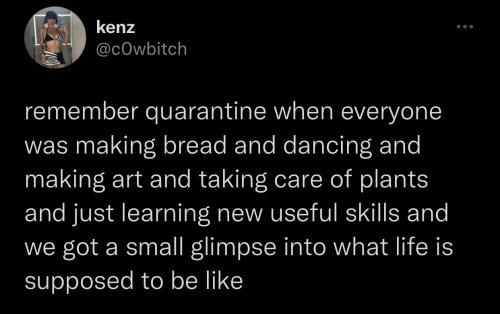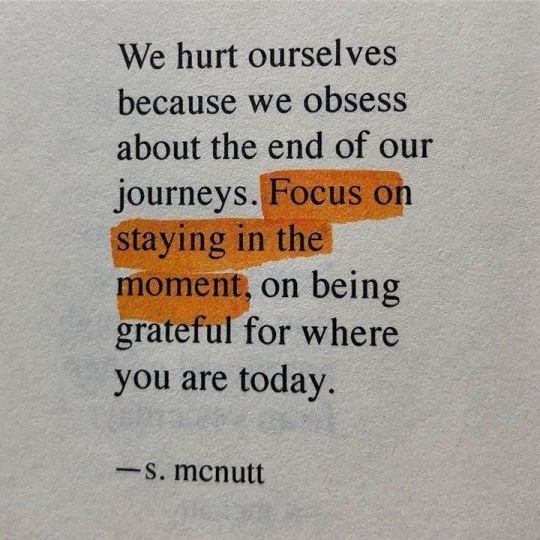Text
One thing I love about my kindle, because I feel I talk about how great physical books are a lot, is that you can see what other people have highlighted. Like you’ll be reading and then there are several sentences underlined and in that moment you and 209 other people are crying together or laughing together or doing that little happy dance because the main characters have finally gotten together or you’re just frozen in physical pain because the story has shattered your heart and you’re not the same person you were when you started reading. And whilst I love physical books, my kindle makes me feel like I’m sat beside someone reading the same book and we just looked at each other and said ‘I know, right?’
185 notes
·
View notes
Text
Fantasy Guide to Royal Households and How they Work
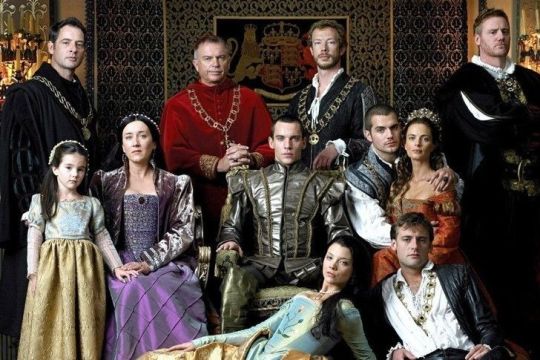
When I say Households, I mean the entourage that follows around the royal family. The household went everywhere with them to care for their needs from the people who would empty their chamber pots to their noble companions. Most royal households are basically the same as noble ones, only on grander scale. Every royal had a household and an entourage as well as every noble at court.
Palace Personnel ~ The Commons
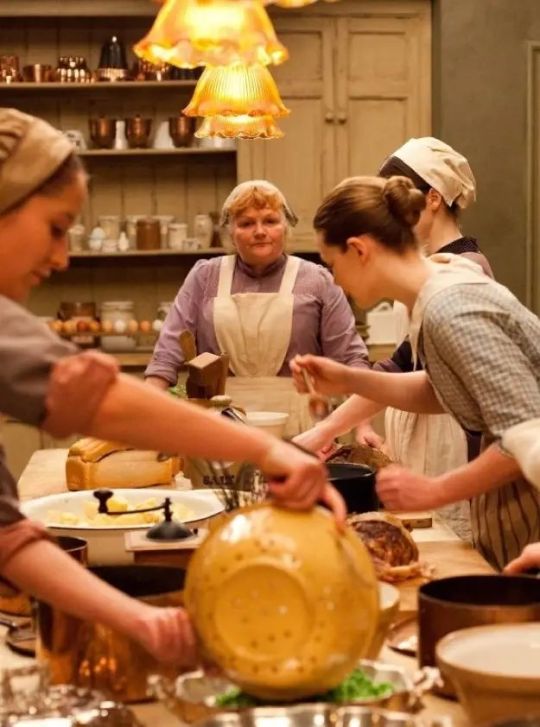
The commons were an intregal part of every household. They made up perhaps 80% of the work force. Royal courts were often on the road and never spent more than a few months at every palace. The court was constantly moving. Some positions were not permanent, meaning certain servants did not travel with the court because they were employed at the palace only. They would be paid by the Monarch's paymaster.
Scullion: The scullion was a relatively easy position to fill so they were often changed as the court went from palace to palace. They would be responsible for scrubbing and cleaning the servants quarters and the kitchens. They would scrub floors with lye, scour pots with sand, sweep put the fireplace and clean up after the other servants. They were the first to rise in a castle and tasked to light all the fires in the kitchens. Scullions would just be employed to the palace and serve a multitude of chambers
Laundress: The laundress was responsible for the cleaning of anything made of fabric in the household. Since they are handling unmentionables, they knew what happened behind closed bedchamber doors. They knew when the King visited the Queen or hadn't, they knew when marriages were consummated or not and they knew when the Queen and royal women were not pregnant. They often sold secrets to pad their pockets. Laundresses might be permanent staff but sometimes not.
Minstrels: The minstrel was a commoner hired to play an instrument or sing for the entertainment of the royal. A royal might staff a few at a time but they would always have one on hand. The minstrel would likely come with their masters as they travelled. The minstrel might serve the main royal household but a royal might retain their own.
Cook: The cook was one of the most important servants in the household. They would have the task of overseeing the running of the kitchens and keeping supplies in order. They would likely be on call at all times. Henry VIII's cook was often woken in the night because his royal master wanted a midnight snack. The cook was a valued member of the household and would have been highly sought after if they were a very skilled cook. They would have travelled with the joint. Cooks were apart of the greater royal household but often royals retained private cooks for their own use.
Maidservant: The maidservant cleans the castle. She would sweep the floors, scrub them, empty the chamberpots, get rid of the ashes from the fire and ready the fire for later. She would make up the bed or strip it for the laundresses. She would wash anything that needed washing including furniture and ornaments. She was likely not a travelling servant and would be strictly employed at a single palace.
Jester: The jester was the hired entertainer. Working under the master of revels, the jester had the daunting task of making the monarch and their family laugh. They would tell jokes, tell stories, cause havoc in the court for laughs and lighten the mood. The most successful jester of all time was Will Somers, jester to Henry VIII. Will broke bad news to the infamously bad tempered monarch and got away with things that would have sent others to the block. Will survived most of Henry's reign, his head intact. Jesters would be apart of the main household though each royal might have one of their own.
Positions within the Royal Household ~ Noble

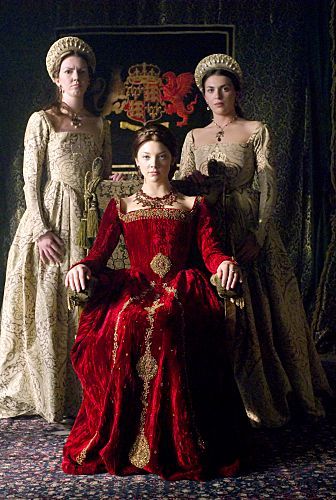
Nobility were always welcomed at court. They eat at court, slept at court and were cared for by the monarch. Some nobles had to sing for their supper and most were hired as royal servants. They weren't exactly scrubbing floors and would be paid handsomely with land that would generate wealth for them
The Steward/Seneschal: This person was the head of the royal's staff. They would have the task of running the lands and servants their master or mistress. The steward served as a backup and assistant in all the tasks even representing their master or mistress when they were unavailable. Would be a high ranking noble. Each royal household would have them.
Treasurer of the Household: The treasurer was the accountant and pay master. They would be in charge of ensuring debts were settled, wages were paid and the household was running within the budget. This was a coveted position because it gave the treasurer insight into the financial situations of the royals. Such info was wroth its weight in gold. Each royal would have one.
Usher: The Gentleman Usher would be in charge of escorting guests into the royal chambers and into the royal presence. They would act as a go between their royal master/mistress and the guest often going back and forth with messages. It was just as coveted as the position of chamberlain but with less responsibilities.
Master of Horse: The Master of Horse was in charge of seeing to the horses of their master. They would oversee the grooms or the stableboy/hands who were employed at the stables to actually care for the horses. The master of horse would ensure that the stables were in order and the horses were up to parr in order to bear royalty across the kingdom. Each royal would have one but there would a main one who acted as overseer.
Master of the Wardrobe/Mistress of the Robes: These are the nobility who are employed to look after the clothes of the royal they serve. This would mainly involve a managerial position, overseeing the inventory of the royal wardrobe (a warehouse like building that housed the clothing) and placing orders for new clothes. It was a tidy job that rarely involved getting the hands dirty. Each royal would have one.
Chamberlain/Valet: The chamberlain is employed to look after the Lord's bedchamber. This was the most sought out position as they effectively were the gateway into the royal presence. Their main task was making sure their boss was comfortable and happy. Could be a well born commoner or a noble. Each royal would have one.
The Page: All royal households had pages. They would be a young noble boy about seven years old sent to their royal master. He would be in charge of tidying up after the lord, carrying messages to other servants and occupants of the castle and serving him at meals. Unlike others on the list, the page would not be paid. His experience was his payment as he would learn the running of a court and how to be courtier. Each royal would have one.
Squires: Squires were like pages though they only served the men. They would accompany their royal master to battle, look after his armour and mail, ensure that his lord's horse was saddled, caring for their master's weapons. The squire would always be a young nobleman on the cusp of becoming a knight.
Governess: The governess is a noblewoman woman employed to oversee the Monarch's children's household. She would be the first teacher a royal child would have and would oversee the nursemaids who would have care of the physical person of the child. She would be appointed when the child was four or five. Notable governesses include Katherine Swynford (wife of John of Gaunt and mother to the Beaufort line), Margaret Pole (wife of Tudor Loyal Sir Richard Pole, sister of the last York heir Edward of Warwick, daughter of George Duke of Clarence and niece to King Edward VI and Richard III), Kat Ashley, Margaret Bryan, Madame de Maintenon and Baroness Lehzen. Most unmarried Princesses retained their governesses while Princes generally outgrew their governesses after they were breeched.
Gentlemen of the Privy Chamber: They were the male companions of a King or Prince, sort of like ladies in waiting but manly. They would accompany the King or Prince everywhere they would go and shared duties with Groom of the Stool (royal toilet paper dispenser) and the Chief Gentleman of the Chamber (overseeing the staff and maintaining the chamber). They would help their master get ready, serve him at the table and organize hunting and games to keep him entertained. Gentlemen and companions where often chosen for their connections as well as their master's own opinion. Henry VIII's gentlemen included: Sir William Compton (ward of Henry VII and heir to rich lands), Sir Henry Norris (the grandson of William Norris who fought with Henry's father at Stroke and a relation to the Yorkists Lovells), Sir Anthony Denny (son of Sir Edmund Denny Baron of the Exchequer) Sir Michael Stanhope (brother in law to Edward Seymour, Duke of Somerset), Charles Brandon (ward of Henry VII and son of Tudor Loyalists)
Ladies in Waiting and Maids in Waiting or Maids of Honour: These are the female attendants to the Queen or Princess. Ladies in Waiting were married while the Maids were unmarried. They would have to attend their mistress wherever she went, help her get ready, keep her chambers in order, write letters for the Queen and maintaining her honour. They were chosen for their connections. Using Katherine of Aragon as an example, her Ladies in Waiting included: Maria de Salinas (daughter of Juan Sancriz de Salinas secretary to Isabella, Princess of Portugal and a Spanish courtier in the service to Katherine's parents, wife of Baron Willoughby de Ersby), Elizabeth Howard (the daughter of Thomas Howard, 2nd Duke of Norfolk, sister to Thomas Howard, 3rd Duke of Norfolk and wife to Thomas Boleyn, ambassador to France), Anne Hastings (daughter of William Hastings, 1st Baron Hastings, wife to George Talbot, Earl of Shrewsbury and Lord Steward.), Agnes Tilney (wife to Thomas Howard, Earl of and 2nd Duke of Norfolk.), Elizabeth Scrope (wife of John de Vere, Earl of Oxford, a loyal Tudor lord), Margaret Scrope (wife of Sir Edmund de la Pole, Earl of Suffolk cousin to the King), Anne Stafford (sister of the Duke of Buckingham, married Sir George Hastings, Earl of Huntington and daughter of Henry Stafford, 2nd Duke of Buckingham (cousin to the King) and Lady Katherine Woodville (sister of King Henry VIII's grandmother and his great aunt by her marriage), Elizabeth Stafford (sister to Anne Stafford wife Robert Radcliffe, Lord Fitzwalter and Earl of Sussex around). Their connections are what got them their places and you can see why they were chosen.
Accommodation

Accommodation can be a difficult thing to sort both as a writer and a steward. You might have a palace of 200+ bedchambers in which you must house a staff of 500-/+, a varying amount of nobles, the royal family (of a varying amount) and their own households. When assigning rooms it is best to think of a Russian nesting doll. Start from the inside and work your way to the outside.
The best rooms go to the monarch, their consort and their children/siblings/parent(s). These chambers would include the bedroom, a drawing room/ common area, a privy, a closet (a small chamber that can be used for prayer or work). They would be furnished with the best cloth, the best candles and whatever furniture brought by the resident since most royal courts travelled from palace to palace. They will also have chambers for their personal servants such as ladies in waiting and grooms.
The second best set of rooms would go to the highest ranking nobles/people in the court. These rooms would be less fancy and a little smaller. These would be given to from titled nobility descending from those of Ducal rank (Dukes/Duchesses) or even members of the council such as Thomas Cromwell in Tudor times.
The next set would be considerably smaller, perhaps minus a closet or a drawing room. Given to lower nobility.
The next level of chambers would be smaller perhaps only the bedroom and a common area given to minor nobles.
The last set of rooms would be small and only hold enough room for a bedroom. Servants would have to sleep on the ground on pallets beside their masters.
Any other guests at court would have to stay at off-site locations around the palace in the city. Some nobles at houses around major palaces just in case they arrived late or were kicked out of court.
16K notes
·
View notes
Text
gotta press on
How to Maintain your Motivation
1. Set realistic and achievable goals. These should be something that appeal to you as it’s hard to go after another person’s goals.
2. Think of meaningful ways to reward your progress.
3. Expect to have set-backs and encounter obstacles. When that happens, focus your mind and renew your determination. Refuse to give up.
4. Decide to remain a positive thinker. Refuse to ever stop believing in yourself. When you feel discouraged, decide that you’ll fight on.
5. Share your goals with others, and seek encouragement when you’re finding it hard to keep going on your own.
6. Practice saying no to other options and distractions that may seem appealing – but distract you from your goal.
7. Post inspirational quotes in places you can see to encourage you to work to achieve your goal.
8. Practice self care so you don’t burn out. You need to pace yourself if you are going to reach your goal.
258 notes
·
View notes
Text
definitely going to be doing more writing this year, going to save this for my writing days
Outline a Rough Draft of Your Novel
This is a worksheet for people like me, who see the dreaded Triangular Mountain of Plot Points and curl up inside. Stories don’t always need to form the shape of a triangle with their conflict, climax, and resolution.
Try these steps out to make a rough draft of your first plotline.
(I say first because most writers always go back and add or delete ideas along the way! What you plan with these steps doesn’t have to be permanent.)
Step 1: Set the Scene
Filling out these points will expand your story and make it seem more real in your mind, if it isn’t something that you have a good concept of already.
This is the step you’ll want to return to if you’re struggling to write later because there aren’t enough concrete details about your fictional world/cast of characters.
My story takes place in (city, country, kingdom, world, universe): __________
The year is: _____
My character(s) is(are): __________
Their current situation is: __________
Step 2: Pinpoint Your Theme
Stories have themes, even when you don’t realize it. Concrete themes, like survival, love, or death, are more straightforward. In Room, the story is about how the main characters survive through a testament to their love for each other.
Or you could want to write about something more fluid, like the experience of growing up. A coming of age theme (like in The Perks of Being a Wallflower) will demonstrate how the young protagonist matures in their identity or their world view by the end of the book.
Whatever your theme is, write it at the top of your planning page or document. I’ve found that I have to return it while outlining when I feel lost or stuck. It’s easy to wander away from your theme when you get excited or if it’s been a while since you got your initial idea. (And you’ll need a concrete theme if you decide to pitch your manuscript to literary agents, so you’re saving your future self a bit of extra work.)
Step 3: Create Your Initial Conflict
Every story needs an initial conflict to kick things off, even if your outline would look more like the line on a heart rate monitor than a triangle. Think about Georgie sailing his boat down the street and going missing in It or Prim getting selected at the reaping in The Hunger Games.
__________ will happen to X character(s) and cause them to react by doing __________.
Because my character(s) had that reaction, the world starts changing by __________.
Step 4: Make Each Chapter a Bullet Point
Chapter One
This will likely include all of the information you planned from Step 1 and 2. The initial conflict is often the hook at the end of the first chapter, but it can happen before or after too!
Chapter Two
When my character sees the world changing in the above ways, they respond by doing __________.
Chapter Three (etc.)
Keep in mind that each chapter needs to have a point that drives your character or plot towards your main theme or conclusion.
Don’t panic if you don’t have all the details of your plot in mind yet! Remember, this bullet point stage is for rough draft planning. You could come up with five chapters that end the book. That’s awesome—go write what you plan!
You’ll get more ideas as you start writing. When inspiration strikes, jump back into the heart of your bullet point list and thread ideas in wherever they fit best. That’s what’s so great about working with a list form instead of writing everything in a simple shape. You have endless room and the eternal ability to expand your fictional world.
Sometimes this part of novel outlining takes me a month. Sometimes many. It depends on how vivid the story is to me when I think about it.
Most of the time, I let my outlines marinate. Make this bullet point list or one without chapter headers. Open your notes when you get an idea for a scene detail, a conflict, dialogue, or anything else. When you want to organize, you’ll have pages of thoughts that came to you while you were working out or grocery shopping. Use them as inspiration to piece together a longer story (or throw out the ideas that aren’t as great as you thought they were).
Step 4: Read Through Your Outline
You’ll have quite a few things going on within your outline at this point, so review everything when you feel like you’ve reached the halfway point or end of your story. You’ll get a feel for the flow, see if the thematic threads or character arcs connect where they should, and spot gaps that need more details.
Writers who don’t typically plan—don’t worry. Read through your bullet point list to refresh yourself.
If you don’t get any ideas like the list above, just start writing. You can update your list with what you write in each chapter as you go, just so you’ll always know where you are in the plot when you sit back down to write again.
Step 5: Check Your Theme or Point
After reviewing your outline, consider if it carries and fulfills your theme or main point that you listed at the top of your document. It should! That’s what creates the bliss of closing a book and knowing every loose end got tied up.
Step 6: Write Your Heart Out
Writers who haven’t written with an existing outline might panic a bit here too. Let me set the scene—when I have a working bullet list outline, I keep it open in its own tab. Then I have another tab with my manuscript.
I usually split my screen in half so I can see both documents, but the manuscript takes up more space so I can see the entirety of each paragraph. I review where I’m at in my outline, then jump into the writing process. The outline is always a click away if I can’t quite remember where the chapter is going, what specific details I planned, or where it’s supposed to end.
Optional Step: Include a “Possible Plot Points” Section
I love letting outlines sit so I can add to them over the course of weeks or even months. At the same time, it creates tons of random ideas that don’t always fit into my outline when I sift through everything and make chapter headings.
The ideas or details that don’t make my outline go in a separate section that I call “Possible Plot Points.” If a chapter is noticeably short, boring, or just plain missing something, I’ll go back to this section. There’s usually something that I can add into my current chapter. Most of the time, I get inspired by the old ideas.
Nothing you write down during your outlining is a waste! Save it all. The stuff you don’t use will become useful later, I promise.
***
Try this version of outlining for yourself! Whether you’re plotting on paper or your computer, outlining is an immense help in writing long-form stories or books.
2K notes
·
View notes
Text
A Comprehensive Guide to Self Publishing Your Book

Publishing a book is every author’s dream, but the path there can be rocky and blocked by a huge wall of information that you need to know. Today, Deborah Dixon has written a comprehensive guide to self-publishing discussing editing printing, distribution, ISBNs, and marketing.
Publishing a book is a rewarding experience, but it can also be confusing or demanding as well. Here is a very brief look at the steps an author can take towards being published.
Traditional vs. Self-Publishing
First ask yourself if you would prefer to be traditionally published or self-published. Both routes are viable and respectable, but they are very different. Traditional publishing involves finding an agent through the process of querying. Authors submit documents like synopses, query letters, and first chapters in hopes that the agents they submit to are interested enough in their manuscript to represent them. Once accepted, the agent finds a suitable publishing house for the author, and all parties coordinate to publish the book from there.
Self-publishing involves much more direct author participation. The author will generally handle editing, marketing, printing, and distributing the book, often with assistance from third parties. There is no need to query agents, but an author should still be prepared to explain their book from a sales standpoint. In self-publishing, the author is their book’s best advocate.
Keep reading
466 notes
·
View notes
Text
What Books To Read at Each Stage of Writing Your Novel

Have you ever wondered what books to read while writing your novel? In this article, Ph.D. and NaNo writer Ursula Saqui offers books to read at every stage of your novel.
With all the craft books available, you might ask yourself, “Should I save a cat, outline using the snowflake method, or take advice from Stephen King?”
The question is also what book to read when. For example, read about subplots when you start writing, and you might get so overwhelmed that you stop altogether. Or, if you draft your story without knowing genre expectations, you’ll have to make significant revisions later.
The following are a few of my favorite books and where they best fit into the writing process.
Before you start writing
The books you read before writing should deconstruct common myths (e.g., suffering is necessary for good writing) that could distract you while also getting you into an optimistic (yet realistic) mindset about the work ahead.
Big Magic by Elizabeth Gilbert is the answer to gut-punching questions like “Who am I to be writing this?” that arise in the gap between having an idea and getting it onto paper. Gilbert offers advice on serious topics such as courage, permission, and persistence while playing the role of your adventurous friend tugging at your sleeve, saying, “Let’s go. It will be fun.” You will finish this book with a plan to handle fear, rejections, and slumps.
Keep reading
211 notes
·
View notes
Text
don't mind me, just starting a new wip and trying to figure some things out
Get to Know the Wip | ask game
🌍 - What is distinctive about the setting? What sets it apart?
👑 - Are there rulers? A government? Who calls all the shots?
🏆 - What is the end goal? What are your characters fighting for?
⌛ - What time period does it take place in? Does it combine periods?
⛪ - Are there religions? If so, how do they affect the culture?
💥 - What is the main conflict of the wip?
💣 - What/who triggers the climax of the plot?
🤫 - A big spoiler/piece of lore out of context
🦋 - Which character has the biggest transformation?
🤒 - Is there whump in the wip? What kind?
🎧 - What are the first three songs on the playlist?
🐱 - What are the animals like? Pets? Local fauna?
🤝 - How do the characters meet? (antagonist included!)
🥀 - Do any characters (even minor) die?
👀 - A piece of lore you’ve been waiting for an excuse to share
🕳 - What’s a plot hole you just can’t seem to fix?
🌑 - Is there reoccurring symbolism? Motifs?
🔮 - Is there a magic system? Explain how it works
🎨 - What colors or textures do you associate with the wip?
💡 - What inspired the wip? When/how did you first get the idea?
843 notes
·
View notes
Text
i just want a love like this


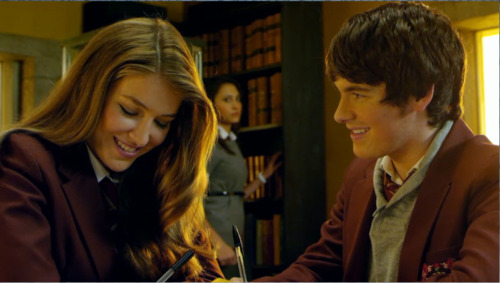



My second favourite couple in House of Anubis.
Fabian and Nina. (Fabina)
45 notes
·
View notes
Text
Listen!!!! If you have problems with your morning routine listen!!
Grab a bag, a box, doesn't matter just something, even a laundry hamper.
Put everything you need to do in it for the morning. If you workout, put workout clothes in, if you take meds, put those in, plan to shower? Hell put your towel and wash cloth in
Hairbrush, toothpaste, deodorant, a bottle of water, homework, charger to bring to work, if you do meditation or journalling, put that shit in there
When you wake up, it acts as both a todo list, and takes away the whole "im so overwhelmed because my brain cant comprehend all the things we have to do and is making this a bigger deal than it is" part
It really helps me (i have adhd and autism)
Good luck!
418 notes
·
View notes
Text

Apparently this one is super hard to learn. Maybe I need a TM... 🤔
6K notes
·
View notes
Text
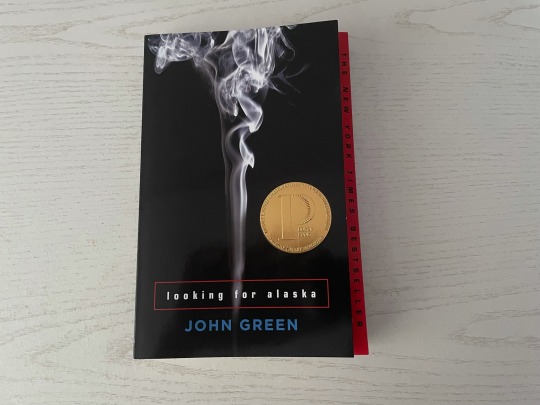

03.01.2022
One of the Christmas presents gifted from my mother to me was a pristine, spine flexible book set from the genius that is John Green. Unfortunately, due to unseen dribbles of water on my desk where I left my book, it is now water-logged. Thankfully, it’s still read-able and I have another copy on the way.
What I love about John Green is he takes really complex characters: A teenage girl with OCD; A kind, albeit fixated on a girl in his class for 10 straight years, young man who just wants to stay in his comfort zone; Two teenagers suffering from cancer; A young man who has been dumped by 19 girls all with the same name, and he just LOVES anagrams; A teenage girl who obviously has some mental health issue because, (SPOILER ALERT) she doesn’t hit that brake; And he just shows us, the readers, that although they have these things that have impacts on their lives, they’re people, just like us. And yes, they’re flawed, I could pick about 20 paragraphs from LFA alone where Pudge just doesn’t let the jig up. We get it dude, you’re pissed that she doesn’t like you and she has a mental health issue that you can’t see. You’re kind of an asshole.
I must admit, although this book is something that I come back to every now and then, the main character Miles is not the reason I come back. For starters he’s very selfish, very critical and the dude just has an awkwardness that isn’t even your typical teenage boy awkwardness, he’s just a weirdo who can’t shed his loser skin. Of course he isn’t the reason I come back. The reason I come back is the reason we have a book. It’s the titular character, it’s the flawed yet somehow perfect character that is Alaska Young. Plus, the Colonel is my idea of a perfect best friend. He’s even better in the Hulu series.
So yeah, this is the reason why John Green books are my bible. Because it’s somewhere that I can see people just like me, a little screwed up, navigating the world in an oh-so-awful way, but those mistakes just shape them.
Looking For Alaska: 5 out of 5 ⭐️
8 notes
·
View notes
Text
sweetest thing ever is when your cheeks ache from grinning … like … your body’s like look how happy you are !!!!
6K notes
·
View notes
Text
saving these for later :)
ask game that tells a lot about you.
how do you take your tea / coffee?
if you could be fluent in any language at the snap of your fingers, which one and why?
when do you wake up?
what was your favourite tv show as a kid?
summer or winter?
realist, optimist, or pessimist?
rain or sunshine?
how do you mark your spot in a book?
what are your favourite shoes like?
what would your non-perfume/cologne signature scent be?
if you were a dragon, what would you look like?
is your handwriting more print, cursive, or a mix?
what colour would your lightsaber be?
what is your defining personality trait?
roller skates or rollerblades or ice skates?
are you an only child? oldest / middle / youngest?
what would your superpower be? how would you use it?
what’s your clothing colour palette?
pet snake or pet bird?
weapon of choice in a medieval battle
the best ice cream flavour
what spices do you always use when cooking?
default font when typing?
12K notes
·
View notes
